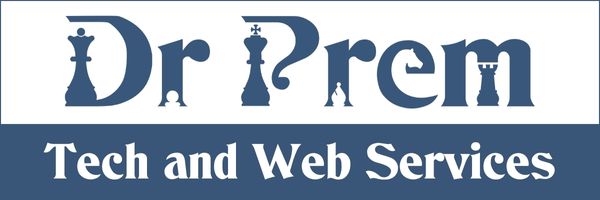Operating System is an interface between the computer hardware and the user. It is a set of complex programs providing a platform to run different types of software on the computer. There are different types of operating systems like real time, multi user, single tasking, multi tasking, distributed or embedded operating system. The best and most common example of operating system is Windows or Mac OS. These two operating systems, in addition to a few others like Unix or Linux are the most widely used and widely known operating systems. However, the world of operating systems is not limited to these two only. Below is a list of ten such alternate operating systems available in the market these days.
1. GNU Hurd
Work on GNU operating system began in 1984. GNU Hurd is a collection of servers to replace the currently existing UNIX Kernel. Once complete, Hurd will be the kernel of the GNU operating system. The Hurd kernel promises a revolutionary set of daemons that are based on a Mach microkernel, with a performance that would far exceed that of the monolithic kernel of a conventional UNIX system. The benefits are better security and more freedom and flexibility for users. GNU Hurd is under active development and a stable version has not been published until now.
2. JNode
A unique project in itself, JNode or (Java New Operating System Design Effort) intends to build an operating system on the Java platform. Its unique feature is that all the softwares are created in Java itself (except for small assembler nano kernel). The interface is very simple and supports all Java applications. Although in its very nascent stage, this OS plans to introduce new features in its future releases including reduced memory consumption and increased hardware acceleration.
3. FreeVMS
VMS or Virtual Memory System is an operating system manufactured by Digital Equipment Corporation. This highly advanced operating system provides both multi user and multi tasking features. Written in C language, this OS runs on a minimum of AMD64. With the latest version being 0.4, this project is also in its initial stages of development and is licensed under the GNU General Public License. It consists of a POSIX kernel and a DCL command line interpreter.
4. DexOS
One of the fastest operating system available for x86 PC, this free and open source OS is easy to install, run and develop. It is so fast that it boots up in a matter of seconds and can easily fit in a floppy disk. It does not support multitasking but has features like media player, games like ping pong, graphical window environment, command line interface like DOS, assembler, and ide and zip support files. Though it cannot be used as a main operating system, it does pack a number of functionalities in its amazingly small size.
5. Inferno
Initially started at the Bell Labs, this distributed operating system is now being developed by the Vita Nuova Holdings. This operating system has been written in Limbo, a programming language with syntax similar to C language. The interesting features of Inferno include open communication protocol called Styx, modular programming language called LIMBO, virtual machine and byte code interpreter, portability and virtualization techniques and automatic garbage collection. The strengths of Inferno lie in its portability across processors and environments, distributed design, minimal hardware requirements, portable applications, and dynamic adaptability. It is not just an operating system, but in fact forms an environment with all necessary tools to create, test, and debug the applications that run inside it.
6. KolibriOS
Considered one of the worldâs smallest and fastest operating system, KolibriOS, a fork of MenuetOS, runs entirely in assembly language (assembly talks straight to the hardware and that is what makes it fast). It is open source, free and easy to download. The size of this OS is small enough to fit on a floppy disk. It has a whole assortment of games, web browser, mail client, desktop utilities and some data processing software that are fun to play with and work upon.
7. OpenBSD
OpenBSD is an operating system like UNIX, which has been made by the Berkley Software Distribution (or BSD). Considered to be one of the most secure operating systems, this OS comes with a number of safety features, which are either missing or left optional in other operating systems. The security is achieved by extensive source code audit, provision of cryptographic interfaces and support for hardware cryptography. This OpenBSD project enjoys many strengths such as security, availability for a wide range of platforms (but not as many as NetBSD), excellent support for non native binaries, reliability and commercial support availability.
8. AROS
The AROS project began in 1995 and, over the years it has become an almost “fully functional” implementation of the AmigaOS. Initially it was called AROS Amiga Research Operating System, but to avoid trademark problems with the Amiga name, it was changed to AROS Research Operating System. It can currently be installed on most IBM compatible PCs and supports standard video drivers for graphics cards like the GeForce around, which is made by Nvidia. Since May 2007, USB keyboards and mice are also supported by this OS. The operating system still lacks many applications but there have been many accomplishments such as inclusion of E-UAE, a program to run 68K AmigaOS applications and wireless networking.
9. ReactOS
ReactOS is a clone of Windows, in the sense that it runs applications that can be run on Windows, runs drivers that can be run on Windows and looks like Windows; but it is not Windows as ReactOS is a completely free and open source project. ReactOS incorporates open source codes from other similar projects too. ReactOS has the same identical architecture as Windows for maximum compatibility. It is mainly written in C with some of the elements in C++ too. The operating system is available under the GNU General Public License Operating System. Its developers are striving to achieve full compatibility with Windows. Still, the operating system is under development and is therefore not suitable for use as a main operating system.
10. Haiku
Haiku is a free operating system that is created with the aim of recreating the 2001 set BeOS. The system is available under the MIT license and has now reached alpha status. Some of the features of this open source operating system are custom designed kernel for improving the response, a simple and cohesive interface and command line applications, many of which have been borrowed from BSD and GNU.




